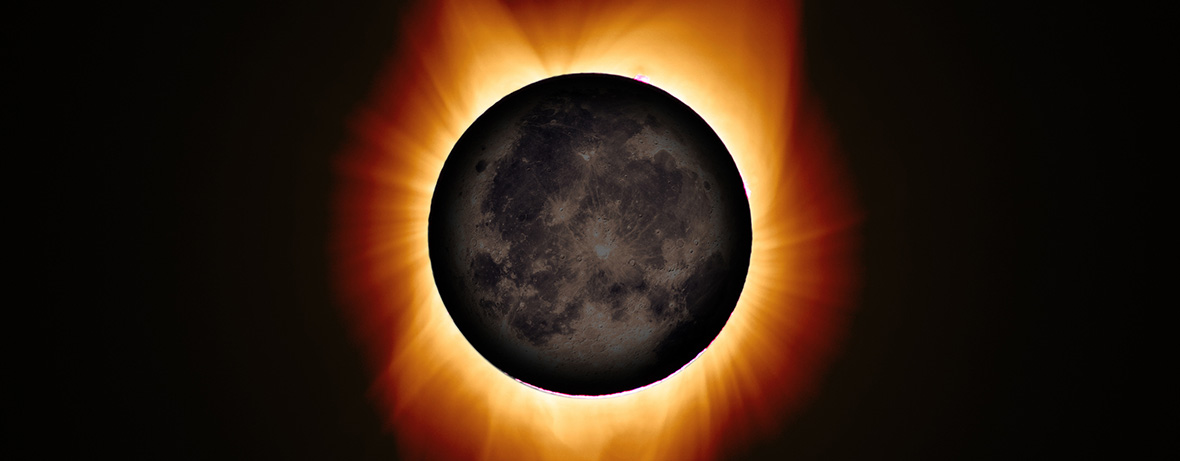
The total solar eclipse on April 8, 2024, will be visible across all 48 continental U.S. states. NASA estimates that 31.6 million people live in the path of totality this year, meaning the sun and the moon will be lined up perfectly with one another, creating darkness. About 2.6 times more people will be in the path of totality compared to 2017’s solar eclipse.
Although a total solar eclipse is quite the spectacle to behold, it is dangerous to view the partial phases of the solar eclipse that occur before and after totality without using proper eye protection, due to the sun’s light still being visible in these stages. It is only during a total phase of a solar eclipse that it is safe to view without eye protection.
Totality occurs in a narrow path on the surface of the Earth and will last about 4 1/2 minutes in the continental U.S. in a narrow track (115 miles wide) from Texas to Economy, Ind. A total phase of a solar eclipse cannot last more than several minutes because the moon’s umbra (dark inner shadow) rapidly moves eastward at over 1,100 mph or 1,500 feet per second.
If you intend to view the solar eclipse, it is necessary to know if you are in the path of totality and at what time of day the various phases of the solar eclipse will occur for safe viewing. This tool can help you see if you are in the path of totality. If you are outside the path of totality, then you must wear proper eye protection or use handheld solar filters to view the solar eclipse at all times because the sun is never fully obscured.
Viewing any part of the sun during the partial phases of the solar eclipse can cause severe eye damage that could result in permanent loss of vision. To keep the eyes safe when viewing the solar eclipse, it is recommended that you wear protective eyewear with solar filters or the use of handheld solar viewers that meet the requirement for ISO 12312-2-2015.
Sunglasses of any kind, regardless of the level of tint, must not be used for viewing the sun or the eclipse. Safe solar viewers are thousands of times darker than sunglasses and have the unique property of completely blacking out vision, except for when viewing the sun.
A welder’s mask with a Shade 12 filter or greater is acceptable to view the solar eclipse, but you must be certain of the Shade filter number. Otherwise, only use eye protection recommended by the International Organization for Standardization (yes, it is abbreviated ISO). The ISO has specific guidelines and standards that must be followed for eclipse glasses and handheld solar filters to be considered safe for the public to use to view the solar eclipse.
Unfortunately, there are fraudsters selling fake eclipse glasses and solar filters that do not meet the ISO 12312-2-2015 requirement. Unless you have access to a photospectrometer, a very expensive piece of laboratory equipment, there is no independent way to verify if your eclipse glasses are safe. Beware that scam vendors have gone so far as to forge the ISO logo or falsely label their product as ISO 12312-2-2015 compliant.
It is recommended to purchase eclipse glasses or a handheld solar filter through a reputable manufacturer (made in the U.S.) or a vendor that has had their products tested and verified by the ISO. The American Astronomical Society’s website lists approved suppliers of safe solar viewers and filters.
Be sure to inspect your eclipse glasses or handheld solar viewer for any defects before using them. If defects or scratches are present on the lenses, do not use them.
Do not attempt to look at the sun through optical devices such as a camera lens, binoculars or a telescope when wearing eclipse glasses or using a handheld solar filter, as the concentrated solar rays will burn through the solar filter and damage the eyes. The sun’s harmful rays can cause damage to the eyelids, ocular surface (such as the cornea) and internal structures of the eye (such as the retina).
The sun’s energy can permanently damage the retina, causing a condition called “solar retinopathy,” with those affected reporting symptoms of blurred vision, central blind spots, metamorphopsia (distorted vision) and photophobia (light sensitivity). Those most at risk for solar retinopathy are younger people, those with an artificial lens implanted after cataract surgery and patients who are on drugs causing sensitivity to sunlight, such as tetracycline and amiodarone.
If you experience any of the symptoms mentioned above after viewing the solar eclipse, please make an appointment with one of our eye specialists for a thorough evaluation. See all of our eye care locations to find one near you.









